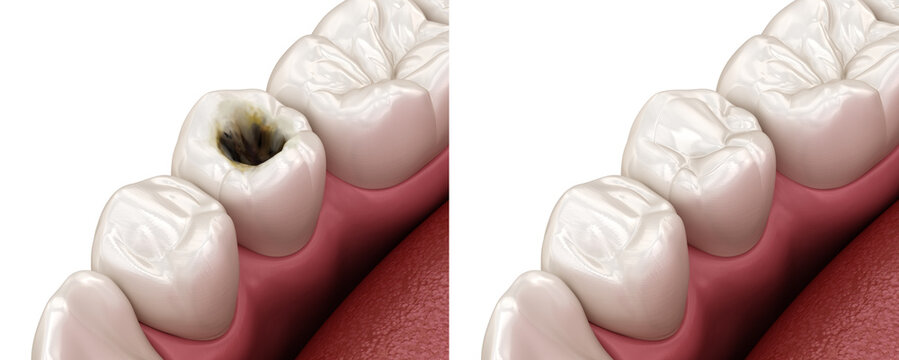Dental fillings are meant to restore damaged teeth and improve oral health. However, in some cases, patients may experience an unexpected issue—fillings worsening food trap problems. Instead of protecting the tooth, certain fillings can create small gaps or uneven surfaces where food particles get stuck, leading to discomfort and potential dental complications.
If you’ve recently had a filling and noticed that food is getting trapped more often between your teeth, you’re not alone. Fillings worsening food trap issues can occur due to improper placement, poor fit, or gradual wear and tear. Understanding why this happens and how to fix it can help you maintain better oral hygiene and prevent further dental problems.
Key Takeaways
- Fillings can worsen food traps if they are misaligned, worn out, or improperly shaped.
- Trapped food increases the risk of cavities, gum irritation, and bad breath.
- Regular dental visits help identify and fix problem fillings.
- Flossing and using mouthwash can reduce food buildup around fillings.
- Alternative solutions like dental bonding or inlays may provide better long-term results.

Why Do Fillings Cause Food Traps?
Fillings should ideally restore the tooth to its natural shape, preventing gaps where food can accumulate. However, several factors can cause fillings to worsen food traps:
1. Improperly Placed Fillings
- If a filling is not shaped correctly, it can leave small spaces between the teeth.
- Poor contouring of the filling may cause food to get stuck in tight crevices.
2. Worn-out or Loose Fillings
- Over time, fillings can degrade or shift slightly, creating gaps where food can lodge.
- A cracked or chipped filling may leave an opening for food to accumulate.
3. Incorrect Filling Size or Material
- A filling that is too large or too small for the cavity can disrupt the natural alignment of the teeth.
- Some filling materials may wear down faster, leading to an uneven surface.
4. Changes in Bite Alignment
- If a filling slightly alters how the upper and lower teeth meet, it can create new spaces for food to get trapped.
- A high filling can prevent proper chewing, leading to food buildup in certain areas.
The Risks of Food Getting Trapped Around Fillings:
If food frequently gets stuck around fillings, it can lead to several dental issues:
1. Increased Risk of Cavities
- Trapped food promotes bacterial growth, leading to plaque buildup and potential cavities.
2. Gum Irritation and Inflammation
- Leftover food can irritate the gums, causing redness, swelling, and even gum disease.
3. Bad Breath (Halitosis)
- Decomposing food particles create an unpleasant odor, leading to persistent bad breath.
4. Tooth Sensitivity or Pain
- Food lodged between teeth can put pressure on the filling, causing discomfort.
- Decay developing under the filling may lead to sensitivity to hot or cold foods.
How to Prevent and Fix Fillings That Worsen Food Traps:
If you suspect that your filling is causing food to get stuck, consider the following solutions:
1. Visit Your Dentist for an Adjustment
- Your dentist can reshape or replace the filling to close the gap.
- If the filling is too high, your dentist may smooth it down for better bite alignment.
2. Use Proper Flossing Techniques
- Slide the floss gently in and out without forcing it between tight spaces.
- Try waxed dental floss or floss picks if regular flossing is difficult.
3. Rinse with an Antibacterial Mouthwash
- Mouthwash helps remove food particles and bacteria from hard-to-reach areas.
- Choose an alcohol-free mouthwash for daily use.
4. Consider Dental Bonding or Inlays
- If a filling is not sealing the space properly, dental bonding or inlays may provide a better fit.
5. Opt for a Different Filling Material
- Composite fillings often bond better with teeth compared to silver (amalgam) fillings.
- Discuss material options with your dentist to find the best solution for your needs.
Conclusion
While fillings are meant to restore damaged teeth, fillings worsening food trap problems can create new dental challenges. Gaps, uneven surfaces, and worn-out fillings can all contribute to food getting stuck, increasing the risk of cavities, gum issues, and bad breath. Regular dental checkups, proper flossing, and timely filling adjustments can help prevent and fix this issue, ensuring your oral health remains in top shape.
FAQs
1. Why does food get stuck around my new filling?
It could be due to a poor fit, incorrect shaping, or a small gap between the filling and neighboring teeth. A dentist can adjust the filling to improve the fit.
2. Can a high filling cause food traps?
Yes, if a filling is too high, it can alter your bite, creating small gaps where food can get stuck. Your dentist can smooth it down to fix the issue.
3. How do I know if my filling needs to be replaced?
Signs that a filling may need replacement include food getting stuck frequently, sensitivity, pain, or visible cracks. Regular dental checkups can help assess the condition of your filling.
4. What type of filling is least likely to cause food traps?
Composite (tooth-colored) fillings bond directly to the tooth and provide a smoother surface, reducing the chances of food getting trapped.
5. Can flossing help with food traps caused by fillings?
Yes, flossing can remove trapped food, but if the gap is too large or the filling is improperly shaped, a dentist may need to fix the problem.
If you’re struggling with food getting stuck around your fillings, don’t ignore it—early intervention can prevent bigger dental problems. Schedule a checkup with your dentist to ensure your fillings are properly placed and functioning as they should!



